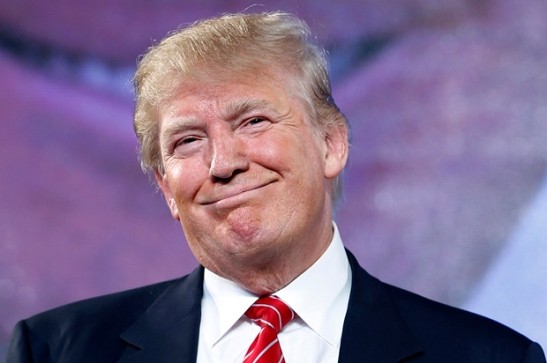What Mr. Trump has right about (formal) remittances

Republican presidential candidate Donald Trump speaks at FreedomFest, Saturday, July 11, 2015, in Las Vegas. Trump said his comments about immigration have become a movement and has pointed to violence perpetrated by immigrants in the U.S. illegally to defend his stance. (AP Photo/John Locher)
Recently, Donald Trump explained that in order to help pay for a wall that would separate the United States from Mexico, he would threaten to take all remittances sent to Mexico from the United States, unless Mexico made a one-time payment of $5 – $10 Bn USD to help pay for the ‘Wall.’ At over $24 M per year in remittances – the value of these remittances is significant.
As a policy proposal, there are grounds where Mr. Trump’s idea might need to concede on to be viable, much less implementable. But, what Mr. Trump has highlighted about remittances is its (sometimes) underrated value as a tool for empowering lives and driving financial inclusion.
The silent giant
Remittances matter by virtue of their financial heft. According to the World Bank, in 2016, international migrants will send $601 billion to their families in their home countries, with developing countries receiving $441 billion. Affordable products and accessible (e.g. able to be reached in rural areas or available to people on low-incomes) help to drive financial inclusion.
Some experts estimate that international migrants’ remittances are 3x the size of official development aid – and this is only formal remittances (informal remittances are, of course, hard to track).
As a result, given that remittances are used for health, education and social outcomes for low-income households in the developing world, the cost of sending / receiving remittances and the accessibility of this product matters. In other words, Trump is right on the significance of remittances.
Appreciating this, there are, in my mind, three key imperatives that comes to mind.
Making big, bigger
First, steps need to be taken to minimize hindrances around sending remittances. Legislation such as Know your customer or Anti Money Laundering rules, while well intentioned around managing the transfer of funds for destructive ends, have hindered the flow of remittances and possibly increased the costs. How can this tension be better managed?
Second, more work needs to be done around driving financial inclusiveness in the sector. Two set of costs related to remittances are linked to sending (e.g. the cost / transfer) and receiving a remittance (e.g. transportation costs). The cost of sending remittances could be decreased through greater transparency by the organizations that help to transfer remittances or through greater use of digital devices, The cost of receiving remittances could be decreased by the use of mobile phones as a means of receiving funds, as money would not have to be spent on transportation from more urban areas for low-income households that live in rural areas.
Last, organizations and governments need to have a better understanding of how remittances are used by recipients. On official development assistance (ODA), there is a barrage of studies on what funds are used for and its efficacy. Yet, with another set of funds that are three times as large as ODA, an equal and current amount of formal understanding is hard to find. This needs to change.
In taking these steps, one could hope that Mr. Trump’s insight will help to empower lives in Mexico and the rest of the world.

While I agree that his comments highlight the importance of remittances, his saying it lessen the impact. His threat to build the wall between Mexico and America is not likely to happen because he will not be in a position to do so.
Remittances are of significant importance to third world countries as it saves life and foster economic developement. Lets hope we can find creative ways to do transfer, hence up with mobile money.